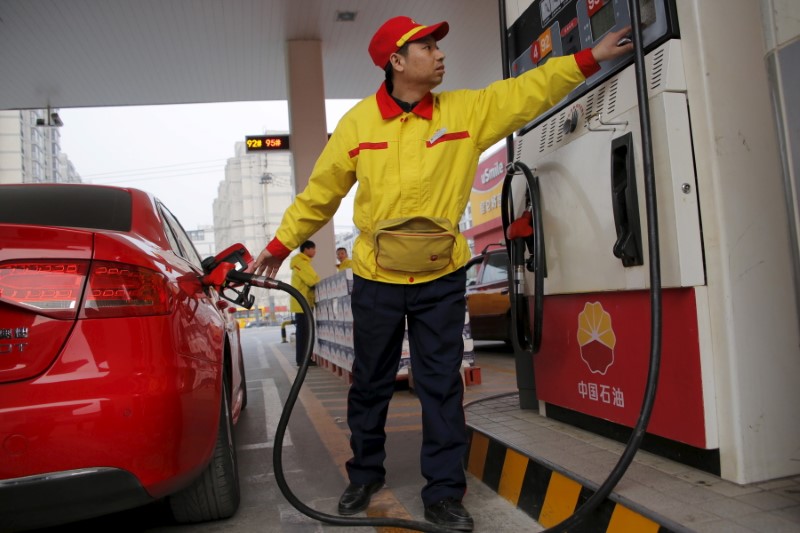 © Reuters. A gas station attendant pumps fuel into a customer’s car at PetroChina’s petrol station in Beijing
© Reuters. A gas station attendant pumps fuel into a customer’s car at PetroChina’s petrol station in BeijingBy Libby George
LONDON (Reuters) – U.S. oil prices hit their highest since 2014 on Wednesday as OPEC-led production cuts and healthy demand helped to balance the market, but analysts warned of possible overheating.
A broad, global market rally, including stocks, has also been fuelling investment into crude oil futures. [MKTS/GLOB]
U.S. West Texas Intermediate (WTI) crude futures () were at $63.42 a barrel, up 46 cents, at 1024 GMT. Earlier prices rose to $63.57, the highest since Dec. 9, 2014.
Brent crude futures () were at $69.10 a barrel, 28 cents above their last close. Brent touched $69.29 in late Tuesday trading, the highest since May 2015.
“The extension of the OPEC agreement … and declining inventories are all helping to drive the price higher,” said William O’Loughlin, investment analyst at Australia’s Rivkin Securities.
The Organization of the Petroleum Exporting Countries, together with Russia and a group of other producers, last November extended an output-cutting deal to cover all of 2018.
The cuts were aimed at reducing a global supply overhang that had dogged oil markets since 2014.
The American Petroleum Institute said late on Tuesday that U.S. crude inventories fell by 11.2 million barrels in the week to Jan. 5, to 416.6 million barrels.
This came as the U.S. Energy Information Administration (EIA) raised its 2018 world oil demand growth forecast by 100,000 barrels per day (bpd) from its previous estimate.
Official EIA stocks data is due at 1530 GMT on Wednesday.
OVERHEATED?
Amid the bull run, which has pushed up crude prices by more than 13 percent since early December, there are indicators of an overheated market.
In the United States, crude oil production
“Selective perception is the reason why the market is completely ignoring this just now,” Commerzbank (DE:) analyst Carsten Fritsch said. “Attention is paid only to news that tallies with the picture of rising prices.”
In Asia, the world’s biggest oil-consuming region, refiners are suffering from high prices and ample fuel supplies.
Asian oil prices are higher than in the rest of the world.
While Brent and WTI are below $70 per barrel, the average price for Asian crude grades has risen to $70.62, Thomson Reuters Eikon data showed.
Fusion Media or anyone involved with Fusion Media will not accept any liability for loss or damage as a result of reliance on the information including data, quotes, charts and buy/sell signals contained within this website. Please be fully informed regarding the risks and costs associated with trading the financial markets, it is one of the riskiest investment forms possible.
Source: Investing.com


























